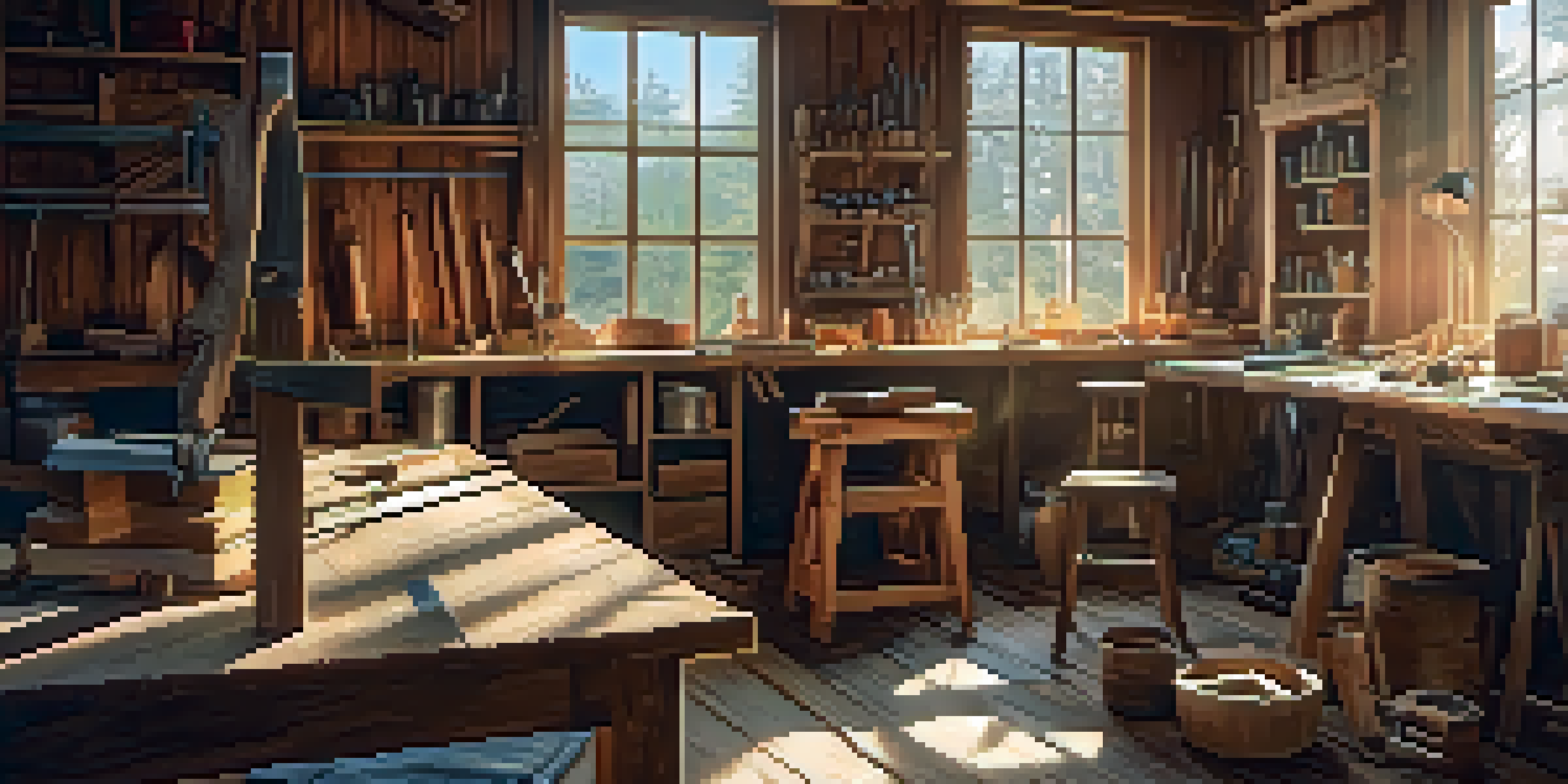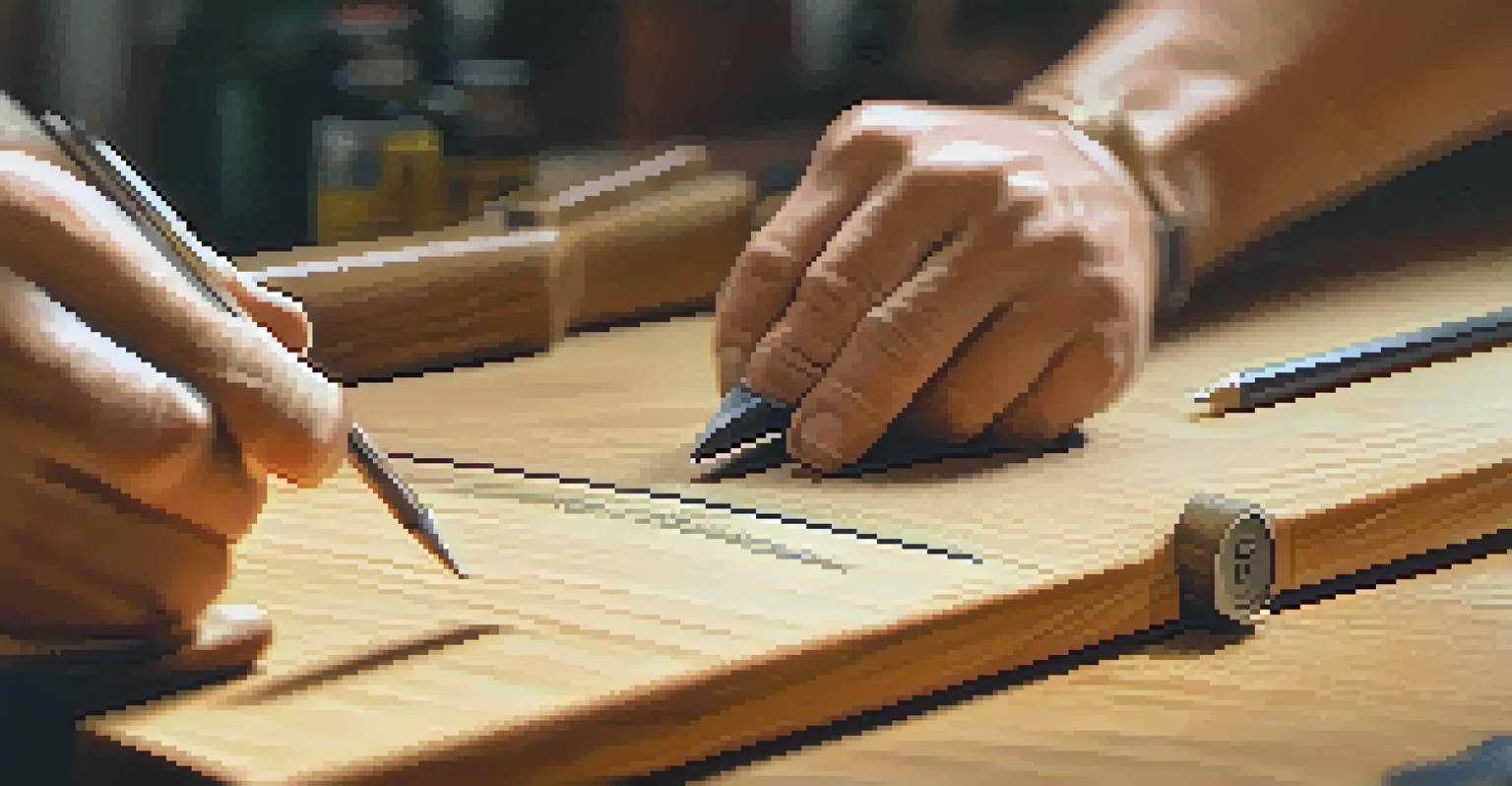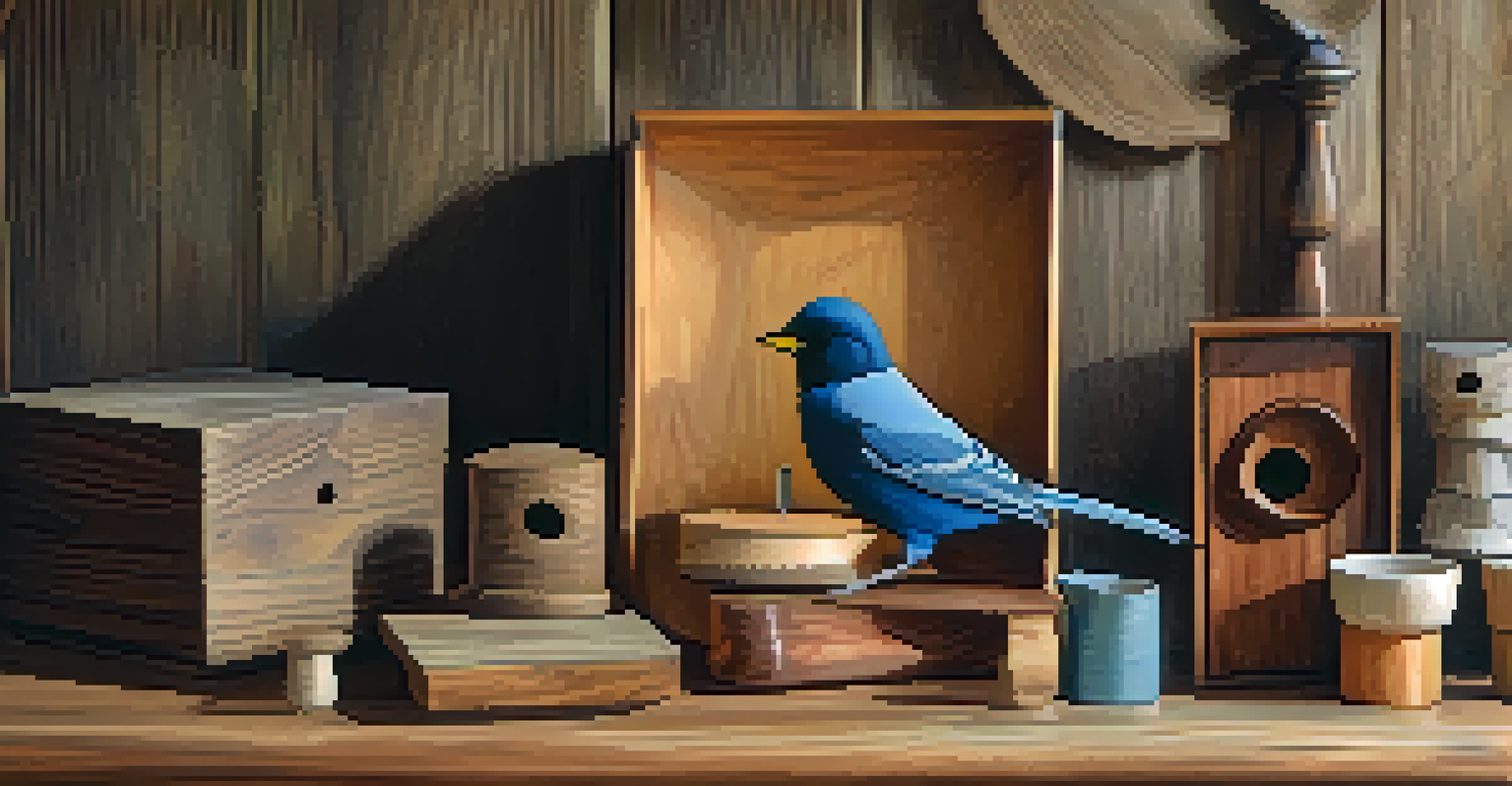Beginner's Guide to Woodworking: Getting Started with Wood

Understanding the Basics of Wood Types and Their Uses
Before diving into woodworking, it’s crucial to understand the different types of wood available. Each type of wood, from oak to pine, has its unique properties, making it suited for specific projects. For example, hardwoods like maple are great for furniture, while softwoods like cedar are perfect for outdoor projects due to their natural resistance to rot.
The best carpenter is not the one who knows the most, but the one who understands wood the best.
Knowing the characteristics of various woods can help you choose the right material for your project. Hardwoods are dense and durable, making them ideal for items that need to withstand wear and tear. On the other hand, softwoods are generally lighter and easier to work with, which is perfect for beginners looking to hone their skills.
As you start your woodworking journey, consider experimenting with both hardwoods and softwoods. This will give you a feel for how different materials behave and help you develop your preferences as a woodworker. Remember, the right wood can make all the difference in the success of your project!
Essential Tools Every Beginner Woodworker Needs
Starting woodworking doesn’t require a full workshop; just a few essential tools will do the trick. Basic tools like a hand saw, hammer, measuring tape, and a square will help you get started on simple projects. These tools are not only affordable but also easy to use, making them perfect for anyone new to woodworking.

As you progress, you may want to invest in power tools like a jigsaw or a circular saw. These tools can make your projects more efficient and allow for more intricate designs. However, it's important to practice safety and learn proper handling techniques to minimize any risks.
Know Your Wood Types
Understanding the differences between hardwoods and softwoods is essential for selecting the right material for your woodworking project.
Remember, the quality of your tools can significantly impact your woodworking experience. Investing in reliable tools, even if they are a bit pricier, will pay off in the long run. Plus, taking care of your tools will ensure they last for many projects to come!
Safety First: Essential Tips for Woodworking Safely
Safety should be your top priority when woodworking. Always wear protective gear like goggles and ear protection to shield yourself from dust and noise. It’s also wise to work in a well-ventilated area to avoid inhaling harmful fumes from paints or finishes.
Measure twice, cut once.
Familiarizing yourself with each tool’s operation is crucial. Read the manuals and watch tutorials to understand how to use them safely. Additionally, keeping your workspace organized and free of clutter can prevent accidents and help you focus on the task at hand.
Lastly, never rush through your projects. Take your time to measure twice and cut once, as the old saying goes. This careful approach not only ensures better results but also keeps you safe while handling sharp tools.
Measuring and Cutting Wood: Techniques for Accuracy
One of the most critical skills in woodworking is mastering the art of measuring and cutting. Accurate measurements are the foundation of any successful project, so it’s essential to invest time in learning how to measure correctly. Always use a reliable measuring tape and double-check your measurements before making any cuts.
When it comes to cutting, take your time and use the right technique for the job. For straight cuts, a miter saw can be a great choice, while a jigsaw is perfect for curves. Remember to mark your cut lines clearly, as this will guide your saw and help you achieve precision.
Safety is Key in Woodworking
Wearing protective gear and maintaining an organized workspace are crucial for preventing accidents while working with tools.
Practice makes perfect! Start with simple projects where you can focus on honing your measuring and cutting skills. With experience, you’ll become more confident in your abilities and can tackle more complex designs.
Joining Wood: An Introduction to Basic Joinery Techniques
Joining wood pieces together is a fundamental aspect of woodworking. There are several basic joinery techniques, including butt joints, lap joints, and miter joints. Each method has its advantages and is suitable for different types of projects, so it's beneficial to familiarize yourself with them.
For beginners, butt joints are the simplest and easiest to execute. However, as you gain confidence, you might want to explore more complex joints like dovetails or mortise and tenon joints, which provide added strength and aesthetics to your projects.
Don't forget to use wood glue in conjunction with your joinery techniques for added durability. Properly clamped joints will ensure your pieces fit snugly together, leading to a more professional finish in your woodworking endeavors.
Finishing Your Wood Projects: Staining and Sealing Basics
Once your project is complete, finishing is the final step that can really enhance its appearance. Staining adds color and highlights the wood grain, while sealing protects your project from moisture and damage. It's important to choose the right type of stain and sealer for your specific wood type and intended use.
Before applying any finish, make sure to sand your project thoroughly. This step smooths out any rough edges and prepares the wood for an even application of stain or sealant. It’s often recommended to use a fine-grit sandpaper for the best results.
Master Measuring and Cutting
Accurate measuring and cutting techniques are foundational skills that significantly impact the quality of your woodworking projects.
Don't rush through the finishing process. Allow each coat of stain or sealant to dry completely before applying the next. This patience will result in a stunning finish that not only looks great but also prolongs the life of your project.
Finding Inspiration and Resources for Your Woodworking Journey
Inspiration can come from various sources, whether it's a friend's project, a woodworking magazine, or online platforms like Pinterest. Exploring these resources can spark new ideas and help you discover what types of projects excite you the most. Don't hesitate to jot down your ideas or save images to create a vision board.
Additionally, there are countless tutorials and forums available that cater to beginners. Websites like YouTube have a wealth of instructional videos that can guide you through specific techniques or projects. Engaging with the woodworking community can also provide valuable insights and tips.

As you embark on your woodworking journey, remember that every expert was once a beginner. Embrace the learning process, share your experiences, and don’t be afraid to ask for help. This supportive community will encourage you to keep honing your craft and trying new things.